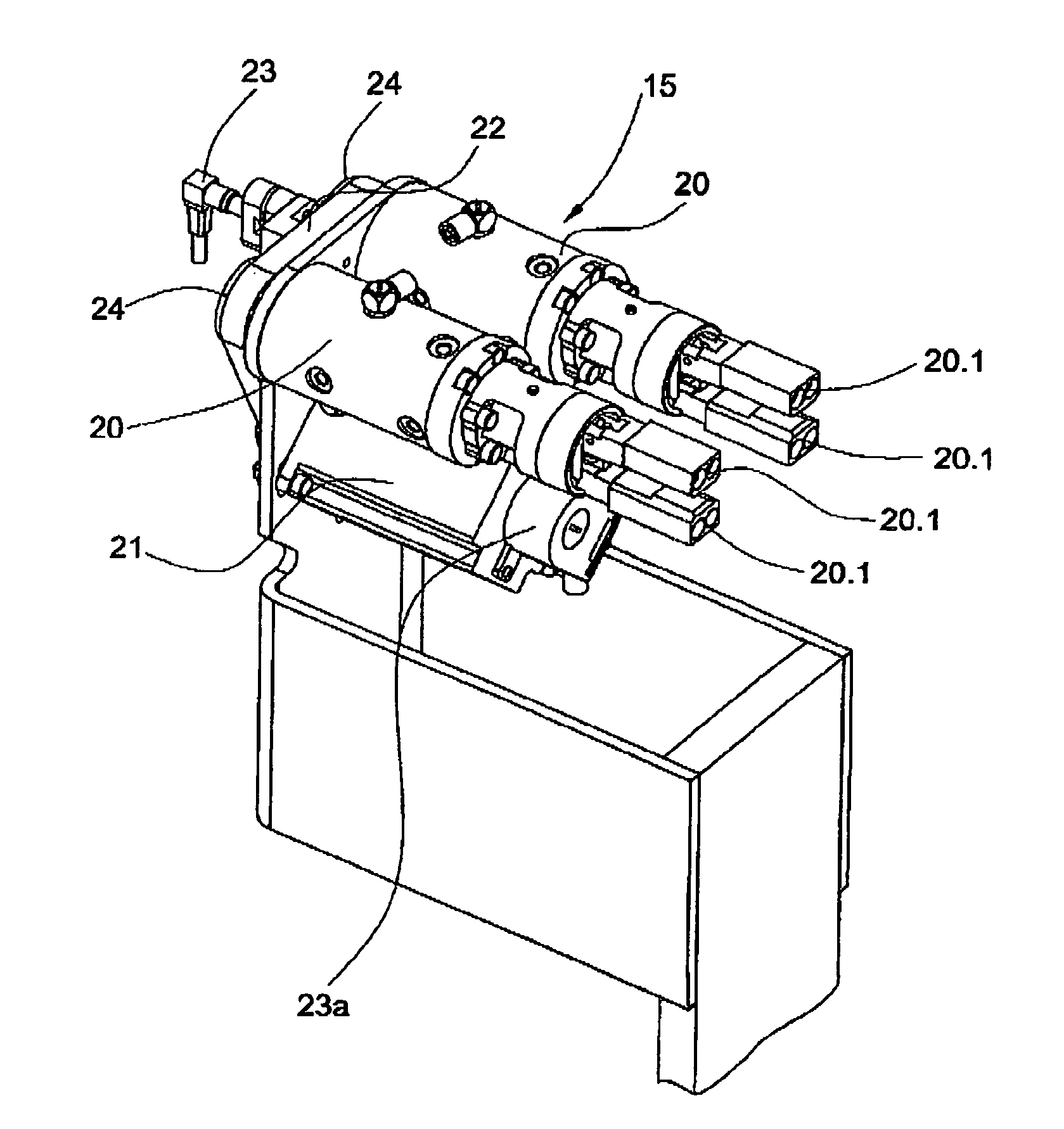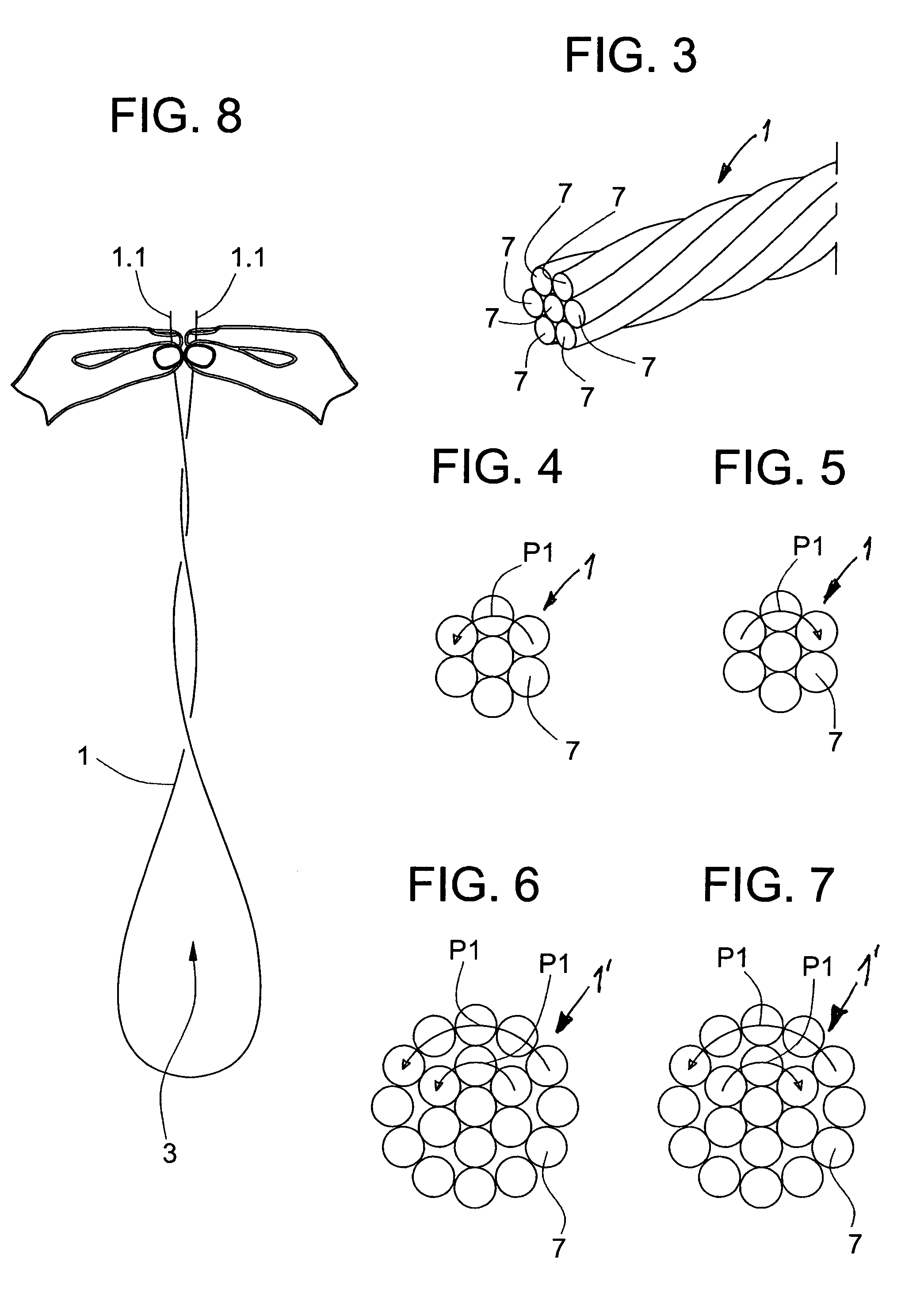Method and device for processing a wire
a processing device and wire technology, applied in the direction of textile cables, electrical appliances, textile treatment untwisting devices, etc., can solve the problems of contactless wires of longer length that are taken out of the machine in bundled state, too high cost, and negative twisting in the wir
- Summary
- Abstract
- Description
- Claims
- Application Information
AI Technical Summary
Benefits of technology
Problems solved by technology
Method used
Image
Examples
Embodiment Construction
[0029]FIG. 1 shows a wire bundle 2 comprising several wires 1 with doubled-back loops 3 caused by wire twist. Arranged on the wire-ends are, for example, are contacts 4 engaging compartments 5 of connector housings 6. While being processed (having its end cut off, insulation stripped, bush mounted, contact crimped, etc.) each wire 1 is held at both wire-ends 1.1 (FIG. 8) so that in the manner described above the twist could not relax and cause the doubled-back loops 3. FIG. 2 shows the wire bundle 2 with untwisted wires 1 and with no doubled-back loops 3. After the wires 1 have been cut to length, they are mechanically untwisted around their longitudinal axis and can therefore not form any further doubled-back loops 3.
[0030]FIGS. 3 to 7 show the stripped wire 1 with laid strands 7 as electric conductors and their lay. FIGS. 3 to 5 show the wire 1 with seven of the strands 7. FIGS. 6 and 7 show a wire 1′ with nineteen of the strands 7. The type of lay (left-hand or right-hand lay) is...
PUM
| Property | Measurement | Unit |
|---|---|---|
| diameter | aaaaa | aaaaa |
| diameter | aaaaa | aaaaa |
| length | aaaaa | aaaaa |
Abstract
Description
Claims
Application Information
 Login to View More
Login to View More - R&D
- Intellectual Property
- Life Sciences
- Materials
- Tech Scout
- Unparalleled Data Quality
- Higher Quality Content
- 60% Fewer Hallucinations
Browse by: Latest US Patents, China's latest patents, Technical Efficacy Thesaurus, Application Domain, Technology Topic, Popular Technical Reports.
© 2025 PatSnap. All rights reserved.Legal|Privacy policy|Modern Slavery Act Transparency Statement|Sitemap|About US| Contact US: help@patsnap.com



